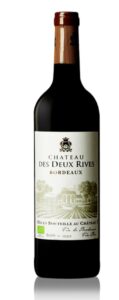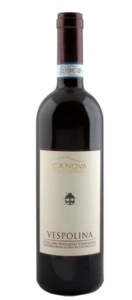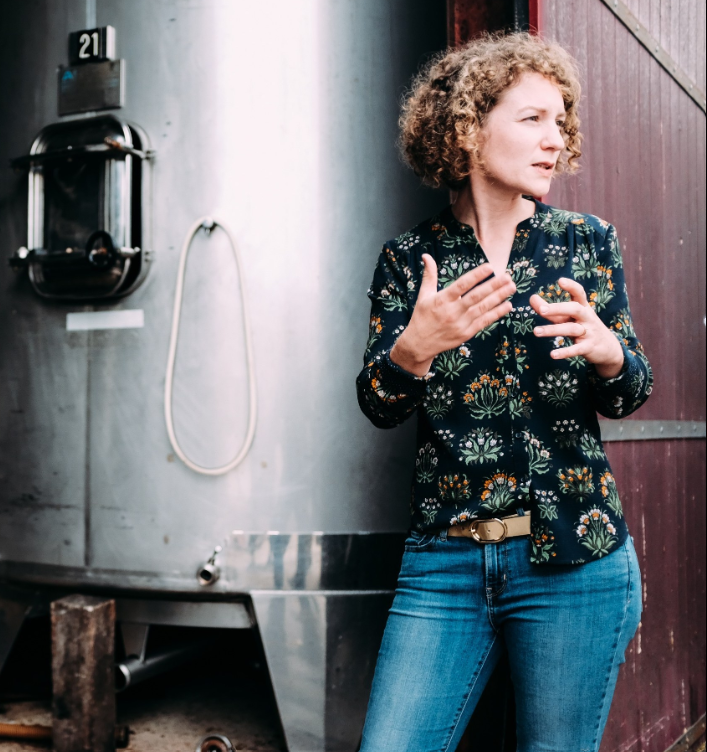- Ch des Deux Rives 2019 (Bordeaux, France) $18
- Ca Nova 2021 Vespolina, (Italy) $19
- Ch Haut-Rian Blanc 2022, (France) $19
- Requiem Cabernet, (CA) $23
- Ch Fontareche Corbieres “Pierre Mignard” 2020 (France) $17
- Polz Steinischer Spiegel (Austria), $17
———————– (The 3-bottle Club Option) ———————–
1. Chateau des Deux Rives 2019 Bordeaux (Merlot/Cabernet Franc, Organic), $18
The Wine
Though this wine hails from the ‘Bordeaux Superiur’ region – containing none of the classified houses – it is a reliable source of good every-day wine to enhance your evening meal on any day of the week. This tiny region is found between the rivers of the Garonne and the Dordogne, just before they merge to form the Gironde (the most famous river of Bordeaux, as it divies the Right Bank from the Left). This wine takes its inspiration from the Right Bank, where Merlot takes top billing and Cabernet Franc is in the supporting role. As such, it’s enjoyable now and for several years to come. But there’s no need to wait – hie thee to the corkscrew (and don’t forget the glasses!)
A note to my haters: Yes, I know the proper term is “Stemware” or simply “Stems”, not “glasses”. IMHO, such puffery is superfluous when preparing for an everyday red like this. Any container that gets the wine from bottle to lips without spilling? THAT’s the proper glassware! If it allows enough room for swirling and sniffing, all the better!
Bordeaux Superiur
Wineries opting to use ‘Bordeaux Superieur’ on their label must meet certain requirements. First, the grapes must come rom the Bordeaux region, of course. Second, the vineyards must be planted with higher vine densities, thus stressing the vines, lowering their yields, and increasing the quality in each remaining grape cluster. Finally, a Bordeaux Superieur wine must be made from vineyards with a 10% lower yield than regular Bordeaux wines – another factor affecting quality. This winery goes a step further by becoming a certified, organic producer.
This red wine is medium-bodied, the wine shows dark fruits (plum, mostly) with enticing notes of cedar and spice. Another wine we believe will punch well above its weight class!
2. Ca’ Nova 2021 Vespolina Colline Novaresi (Italy), $19
The Wine
A light red known for its enticing aromatics, wines made from the Vespolina grape offer hints of wild flowers, white pepper, spices, forest floor/mushrooms and green tea. Classic local pairings include charcuterie, hummus, duck confit on salad greens, grilled eggplant with lentils, veal and other light proteins (pork, chicken, tofu).
The ladybug on the label is a symbol of the winery’s dedication to healthy farming. While their climatic conditions make full organic certificaiton difficult, they avoid the use of chemical weed killers, their fertilizers are based on microelements, and they follow a practice called “green manure” (plowing under crops grown between the vines during the off season) to bring natural nutrients to the their vines.
Cool Wine Trivia:
The Italian word for wasp is ‘Vespa’. The quintessential Italian scooter was so named because the wine of its engine sounds like the buzz of a wasp. But the Vespalina grape takes its name from a different waspy reference – the wasps that are attracted to the grape’s ripe, sweetly aromatic juices around harvest time. Hazard pay, anyone?
The Winery
The small Ca’ Nova winery (~3,600 cases / yr) is located in Colline Novarese – a sub-zone of Northwestern Italy’s Piemonte region. As its name implies, “Colline Novaresi” surrounds the town of Novara, taking the “Colline” part of its name from the nearby Alps just 20 miles West of Milan.
The wine laws of Colline Novarese require that any wine containing the name of a grape on its label (in this case, “Vespolina”), must contain 85% of that variety. This is often surprising to domestic wine lovers accustomed to the 75% rule that is standard in the US.
Nebbiolo (called Spanna here!) accounts for 53% of the plantings in Colline Novarese, but Vespolina comes in at #2 with 17%. This is one of three primary regions for Vespolina (along with Gattinara and Oltrepo Popavese). Together, this trio of regions account for virtually 100% of the world’s supply of Vespolina. But Colline Novarese is one of the few where it is more than a blending grape!
3. Ch Haut-Rian Blanc 2022, France, $19
The Wine
Stainless Steel fermentation at controlled temperatures to preserve the wine’s aromatics. The wine is dry but with ample fruit notes and a long, complex finish. Look for notes of apple and grapefruit.
A blend of old-vine Semillon (60%) and Sauvignon Blanc (40%) from the limestone hillsides around the estate. The wine contains no Muscadelle, which is often present in trace amounts in many white Bordeaux wines. The Semillon brings a waxy, honied note to Sauvignon Blanc’s classic aromas of grassiness and a hint of bell pepper. By law, a white Bordeaux must contain a minimum of 25% Sauvignon Blanc. From there it’s the winemaker’s choice – adding higher amounts of Muscadelle results in a lighter wine, while adding more Semillon provides a richer, more cellar-worthy style.
White Bordeaux suffers on the world market because of the fame of the region’s reds, but the wise insider knows these wines are a screaming-good value!
The Winery
The “Cadillac” region of Bordeaux provides the world with far more than just the naming inspiration for a famous General Motors Vehicle. The Cadillac Côtes de Bordeaux is also home to some really nice wines. And now it’s home to Chateau Haut-Rian.
Now in its second generation, Chateau Haut-Rian was founded in 1989 by the husband-wife team of Michel & Isabelle Lapierre. Both came from winemaking families- Michel’s in Alsace and Isabelle’s in Champagne. Today their daughter, Pauline, has her hand on the reins.
After working in Paris and South-East Asia for a number of years, Pauline decided to return to the family business in 2015. In 2017 she graduated with a degree in enology from Montpellier and joined her family’s small winemaking team. Today she manages all daily operations.
Their sizable vineyard holdings include 87 parcels (~200 acres in total) spread across the Entre-deux-Mers (whites) and Premières Côtes de Bordeaux (reds) regions. This wine is from Entre-deux-Mers, known for the clay/limestone soils so highly valued by fans of coolish-climate Sauvignon Blanc and Semillon.
Paline’s commitment to sustainability is evidenced by the winery’s Terra Vitis certification they earned in 2017, the Bee Friendly certification in 2018, and next year they expect to be granted their organic certification. All their wines are from estate fruit.
———————– (“6-bottle” Membership Option: all of above, plus…) ———————–
4. Requiem Cabernet, Columbia Valley (WA)
The Wine
Notes of bitter chocolate, a hint of Bay leaf, dark plums and tobacco. Medium-firm tannins lead to a finish that echoes the bitter chocolate.
The vintage began with a dry, even spring followed by Columbia Valley’s hottest summer on record. The heat reduced yields were by a ruinous 25-50%. But with low yields often comes high quality – and this year the grapes produced wines that are remarkably dense, concentrated, and flavorful.
A blend of 95% Cabernet Sauvignon and 5% Merlot/Malbec/Syrah/Petit Verdot. The grapes were harvested at the end of September from two sub-AVAs in the Columbia Valley, Horse Heaven Hills and Red Mountain. Horse Heaven Hills (HHH) is an area known for high winds that create thicker skins and eliminating/reducing the need or mildew control via chemical sprays. One of the driest areas with a miserly annual rainfall of 7-9 inches. Talk about dry farmed vines!
The Red Mountain district is the smallest and driest of Washington’s larger Columbia Valley. It is not uncommon to see a 40-degree swing between the heat of the day to the cool of the night, a condition that preserves the grape’s valued acidity. Average rainfall here is an even more miserly 5-7 inches.
The Winery
This wine comes from the minds behind the popular Banshee wines from Sonoma and the Averaen wines from Oregon. Working for months at a time on the Avarean project in OR put Washington on their radar. Soon the team yearned to make an affordable, ‘Napa-level’ Cabernet from Washington fruit, and to introduce it at an affordable price!
5. Château Fontarèche 2020 “Pierre Mignard” Rouge, Corbieres France, $17
The Wine
A blend of Syrah, Mourvedre, Carignan and Picpoul Rouge (!) the wine deploys a bit of carbonic maceration (for the Carginan only) to elevate the aromatics and lift this blend from what can tend to be deep and dark and brooding and meaty in nature. A delicious rendition of the typical red blend from Southern France!
Very deep color, dark ruby, almost black. A big and effusive nose blends warm spices and toasted, roasted aromas. The black fruit stays in the background, allowing delicacy and deliciousness to take the lead. On the palate the wine offers a freshness from start to finish, with a ‘pretty’ fruit profile. A nice every-day house wine!
The Winery
A more historic site is difficult to imagine. Fontareche has a documented history dating back to 984, when the land was granted to Sieur Fontareche (known for maintaining a private army of 16 knights). The estate’s documented wine-making history dates back to 1350 (in the inventories of ath archbiship of Narbonne, in case you want to look it up!) in what is now the Corbieres region – a sub-region within the larger Languedoc. The Mignard family, and their descendents, the Lamy family, have been running the estate since 1682. The stunning family home is located at the center of almost 500 acres of property, 384 of which are planted to vines. Francophiles, or at least SOUTHERN Francophiles, may be better oriented by knowing the estate is near the medieval city of Carcasonne home to one of the oldest (and most rustic) castles in France, a pioneer in design as the first to have an indoor bathroom (gravity flow to the nearby river!).
But I digress,
6. Polz Steinischer Spiegel, Sudsteiermark (Austria), $17
The Wine
A delicoius blend of Sauvignon Blanc (50%) Riesling (40%) and Muller Thurgau (10%), this wine just might be the best value in the history of Austrian wine! The idea of blending Sauvignon Blanc (the region’s best-known varietal) with Riesling was an inspired – the two blend seamlessly and unexpectedly. Throw in a bit of Muller-Thurgau and you have a wine that punches above its weight, both in price/quality ratio and in its pairing partners!
The Winery


